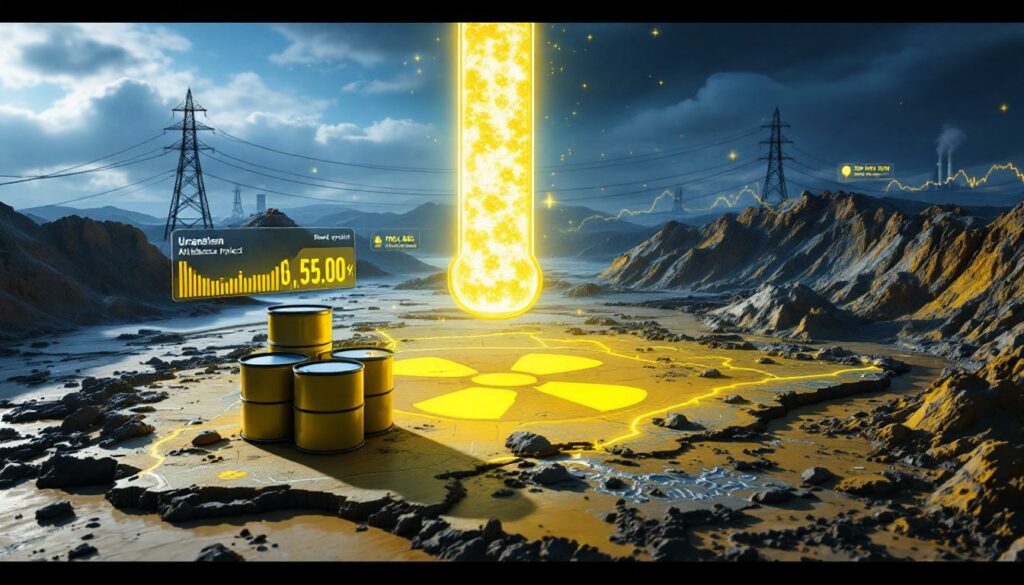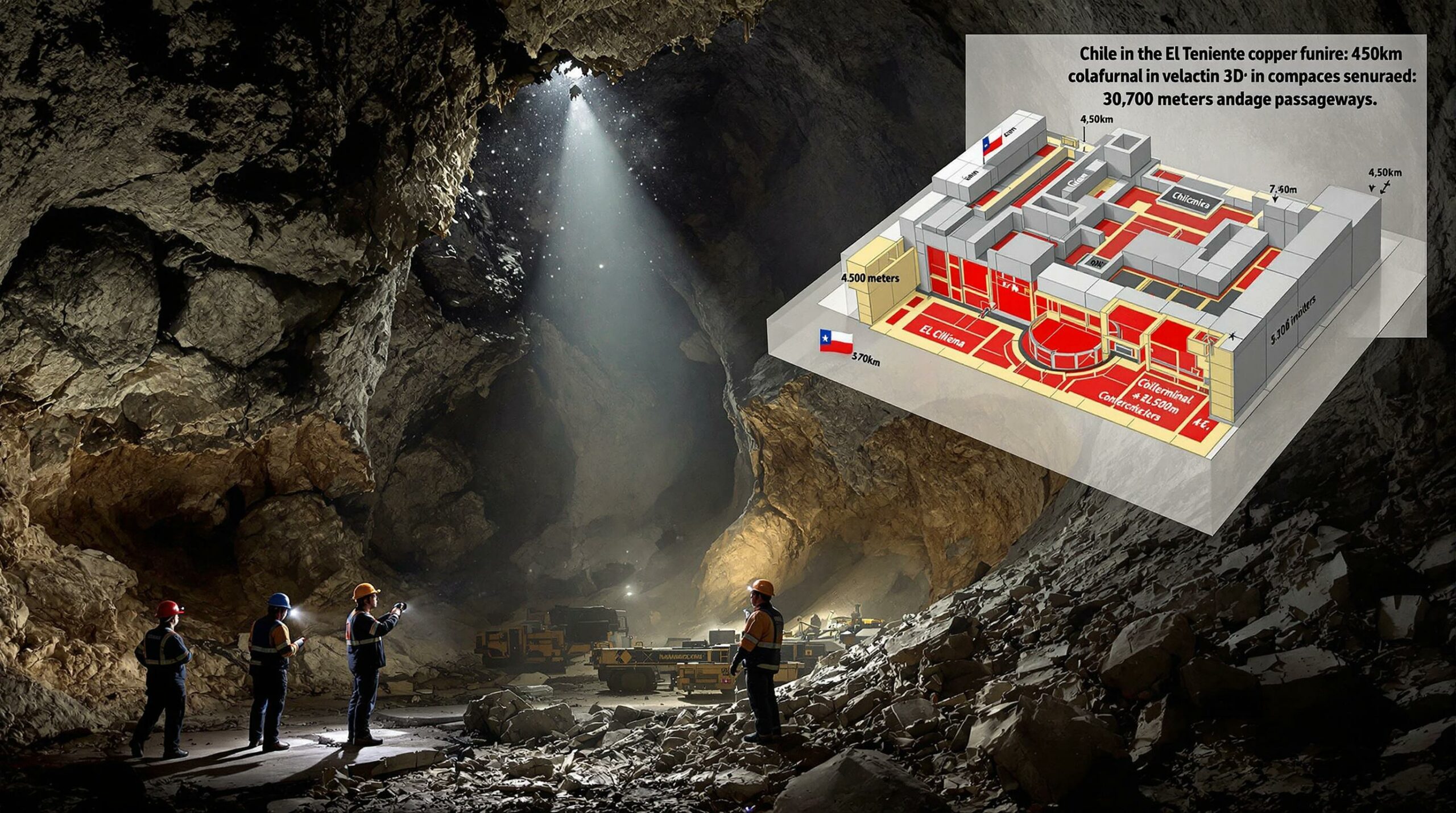Understanding NexGen's Strategic Uranium Offtake Deal: Market Implications & Future Outlook
NexGen Energy has secured a significant five-year uranium supply agreement with a major U.S. utility company, marking a pivotal development in the nuclear fuel supply chain. This strategic NexGen uranium offtake deal not only strengthens NexGen's market position but also signals important shifts in how utilities are approaching long-term uranium procurement amid growing energy security concerns.
What Does NexGen's New Uranium Offtake Agreement Include?
The recently announced uranium offtake agreement represents a substantial commercial milestone for NexGen Energy and its flagship Rook I Project. The deal's structure reveals careful consideration of both current market conditions and anticipated future dynamics in the uranium market volatility.
Key Terms of the Five-Year Contract
- Annual Volume: 1 million pounds of uranium to be delivered each year
- Contract Duration: Five-year term commencing with first production
- Pricing Structure: Market-related pricing mechanisms applied at delivery time
- Production Source: All material to be sourced from the Rook I Project in Saskatchewan
- Contract Portfolio: Doubles NexGen's contracted volumes to over 10 million pounds
This latest agreement follows NexGen's initial sales contracts established in December 2024, demonstrating accelerating commercial momentum for the company's uranium production plans.
Strategic Timing and Market Context
The timing of this agreement is particularly noteworthy given the current uranium market dynamics. NexGen has secured this contract amid heightened concerns over sovereign and technical risks in current uranium production sources globally.
As Leigh Curyer, NexGen founder and CEO, explained: "In an era defined by the intersection of energy security and national security, combined with surging demand for electrification, NexGen's role in enhancing energy security and independence for its power utility clients has never been more critical."
The deal's structure, featuring market-related pricing mechanisms rather than fixed pricing, suggests both parties anticipate potential upside in uranium prices during the contract period.
How Does the Rook I Project Stand Out in the Uranium Market?
NexGen's Rook I Project possesses several distinctive attributes that position it advantageously within the global uranium development landscape. These characteristics have proven attractive to utility customers seeking reliable, long-term supply partners.
Project Fundamentals and Competitive Advantages
- Prime Location: Situated in Saskatchewan's southern Athabasca Basin, a region known for world-class uranium deposits
- Substantial Resource Base: Arrow Deposit contains 229.6 million pounds of uncontracted uranium reserves
- Technical Simplicity: Engineering and operational design emphasizes straightforward extraction and processing
- Production Certainty: High confidence in output projections enhances appeal to utility customers
The project's location in Canada's established uranium mining jurisdiction provides significant geopolitical advantages. Saskatchewan has a long history of stable mining regulation and world-leading environmental standards, reducing political risk factors that increasingly concern utility customers.
Supply Chain Security Considerations
The Rook I Project addresses growing utility concerns about uranium supply chain security. As global tensions increase, Western utilities in particular are prioritizing uranium sources from politically stable jurisdictions with established regulatory frameworks.
This shift represents a notable change from previous decades when geographic source was less of a consideration in uranium procurement decisions. The project's North American location provides natural advantages in this evolving landscape, particularly for U.S. utilities facing increased pressure to secure critical minerals from friendly nations.
Why Are Utilities Securing Long-Term Uranium Contracts Now?
The uranium market is experiencing a significant structural shift as utilities return to long-term contracting after a prolonged period of reliance on spot market purchases. This behavioral change reflects several converging factors affecting both uranium supply and nuclear fuel demand.
Market Drivers Behind Contracting Activity
- Energy Security Prioritization: Growing recognition of nuclear power's role in stable baseload generation
- Supply Uncertainty: Limited investment in new uranium projects over the past decade
- Geopolitical Tensions: Increasing concerns about reliance on uranium from certain jurisdictions
- Climate Policy Support: Strengthening policy frameworks supporting nuclear as clean energy
- Production Timelines: Recognition that new mines require years of development before production
The utility customer securing this offtake agreement appears to be taking a proactive approach to future fuel requirements, recognizing the potential for tightening supply conditions as global nuclear capacity expands.
Benefits for Utility Customers
For the U.S. utility securing this agreement, the deal offers several strategic advantages:
- Supply Security: Locking in substantial volume from a politically stable jurisdiction
- Price Exposure Management: Market-based pricing mechanism balances fixed price risks with certainty
- Fuel Planning Horizon: Five-year term allows for medium-term reactor fuel planning
- Portfolio Diversification: Reduces dependency on existing supply sources
- ESG Considerations: Canadian uranium production meets high environmental and social standards
This contract structure appears designed to balance the utility's need for supply certainty with flexibility to adapt to changing market conditions, reflecting sophisticated fuel procurement strategy.
What Does NexGen's Contracting Strategy Reveal?
NexGen's approach to uranium sales contracts demonstrates a deliberate commercial philosophy designed to maximize long-term shareholder value while addressing utility customer needs in a changing energy landscape.
Commercial Philosophy and Approach
The company has now contracted just over 10 million pounds of uranium, representing less than 5% of the Arrow Deposit's total reserves. This selective contracting approach suggests NexGen is:
- Maintaining Optionality: Keeping the vast majority (over 95%) of reserves uncontracted
- Building Customer Relationships: Establishing commercial ties with major utilities
- Preserving Price Upside: Positioning for potential future uranium price increases
- Balancing Portfolio: Creating mix of contracted and market-exposed production
As CEO Leigh Curyer stated: "NexGen's stated strategy simply optimises the value and return on each pound produced. It reflects Rook I's relative technical simplicity and high production volume certainty, which provides our utility clients confidence in the delivery of their future fuel requirements."
CEO Perspective on Market Position
NexGen's leadership views the company as positioned to become a cornerstone supplier in the global nuclear fuel market. Curyer noted the team is "managing a substantial increase in offtake activity and negotiation," suggesting growing utility interest in securing offtake from the project.
This increased commercial activity aligns with broader industry observations about accelerating uranium procurement by utilities seeking to secure future fuel supplies amid tightening market conditions.
How Might This Impact the Broader Uranium Market?
NexGen's contracting activity provides valuable signals about evolving uranium market dynamics that could influence both producers and consumers in coming years.
Industry-Wide Implications
- Contract Renewal Cycle: May accelerate other utilities' contracting activities
- Price Discovery: Helps establish market reference points for long-term uranium values
- Production Incentivization: Supports investment case for new uranium development
- Supply Visibility: Improves transparency on future uranium production sources
- Jurisdictional Preferences: Reinforces trend toward Western uranium supply sources
The structure of this agreement, featuring market-related pricing rather than fixed prices, suggests both NexGen and the utility anticipate potential uranium price appreciation during the contract period.
Future Market Dynamics to Watch
As additional uranium projects secure offtake agreements, several key market dynamics bear watching:
- Contract-to-Market Gap: Spread between long-term contract and spot prices
- Geographic Premium: Price differential between uranium from preferred vs. other jurisdictions
- Production Timeline Certainty: Growing importance of clear development schedules
- Inventory Management: Changes in utility inventory holding strategies
- Term Structure: Evolution of contract duration preferences
These dynamics will influence not only uranium pricing but also which projects secure financing and reach production in the coming decade. Furthermore, the U.S. uranium import ban has created additional pressure on utilities to secure alternative supply sources.
What Challenges and Opportunities Lie Ahead?
While securing offtake agreements represents an important commercial milestone, NexGen faces several critical tasks before uranium deliveries can commence.
Development Considerations for Rook I
- Financing Requirements: Securing project capital while maintaining favorable terms
- Permitting Timeline: Navigating remaining regulatory approvals
- Construction Execution: Managing build schedule and budget in remote location
- Production Ramp-Up: Achieving targeted production rates and specifications
- Infrastructure Development: Completing supporting infrastructure requirements
Successfully addressing these challenges will be essential for NexGen to meet its contractual obligations and establish itself as a reliable uranium supplier. With recent Paladin Energy uranium halt in Namibia, the market is increasingly sensitive to production disruptions.
Future Strategic Options
With over 95% of its uranium reserves still uncontracted, NexGen retains significant flexibility in its future commercial strategy, including:
- Balanced Contract Portfolio: Maintaining mix of fixed-price and market-related contracts
- Geographic Diversification: Expanding customer base beyond North America
- Term Optimization: Potentially varying contract durations based on market outlook
- Value-Added Services: Exploring additional services beyond raw uranium supply
- Strategic Partnerships: Potential collaboration with conversion or enrichment providers
These options allow NexGen to adapt its commercial approach as market conditions evolve and the project advances toward production. The company's strategy aligns with broader developments in U.S. uranium production tech that aims to revitalize domestic supply.
FAQ: NexGen's Uranium Offtake Agreement
What makes the Rook I Project important to the uranium market?
The project represents a significant new source of uranium from a politically stable jurisdiction with substantial reserves (229.6 million pounds) and technical simplicity, addressing growing concerns about supply chain security in the nuclear fuel cycle.
How does the pricing structure work in this agreement?
The contract incorporates market-related pricing mechanisms applied at the time of delivery, allowing both parties to benefit from price movements while ensuring supply security. This approach differs from fixed-price contracts that dominated earlier uranium contracting cycles.
What percentage of NexGen's reserves are now under contract?
With this agreement, NexGen has contracted just over 10 million pounds of uranium, leaving approximately 219.6 million pounds (over 95%) of the Arrow Deposit's reserves uncontracted for future opportunities. This selective approach preserves significant optionality for the company.
When will NexGen begin delivering uranium under this contract?
Deliveries will commence in the first year of commercial production from the Rook I Project. The exact date depends on the project's development timeline, including completion of permitting, construction, and commissioning activities.
Disclaimer: This article contains forward-looking statements regarding uranium markets, project development timelines, and future market conditions. Actual outcomes may differ materially from those projected. Readers should not interpret any content as investment advice and should conduct their own research before making investment decisions.
Further Exploration:
Readers interested in learning more about uranium market developments can also explore related educational content at Mining Technology's website, which offers additional perspectives on global mining projects and market trends. For more details on the specifics of NexGen's offtake agreement, you can review the official announcement providing comprehensive information about the contract terms.
Want to Spot Major Mineral Discoveries Before the Market?
Discover why significant mineral finds like NexGen's uranium project can deliver substantial market returns by exploring Discovery Alert's dedicated discoveries page. Begin your 30-day free trial today at https://discoveryalert.com.au/discoveries/ and gain instant, AI-powered notifications on significant ASX mineral discoveries.




